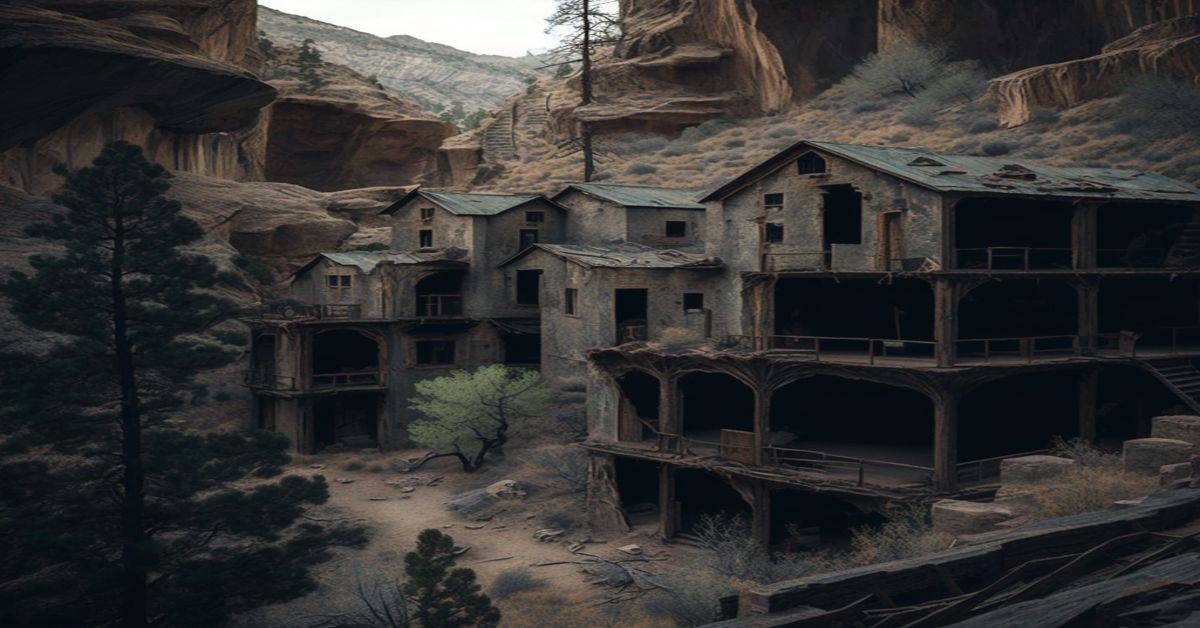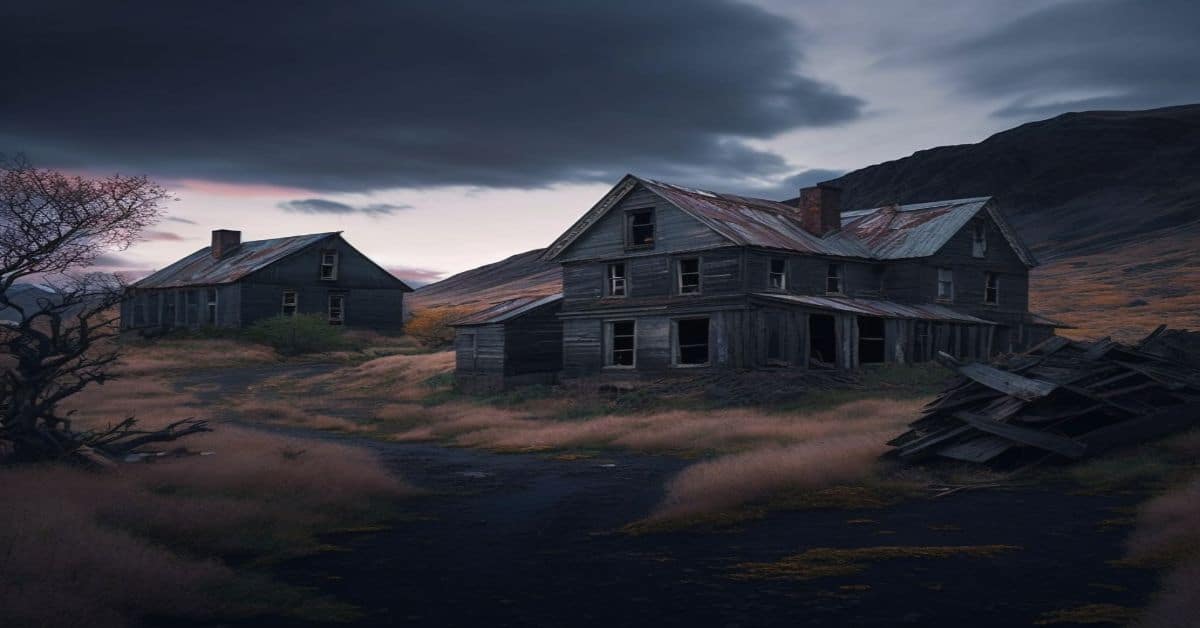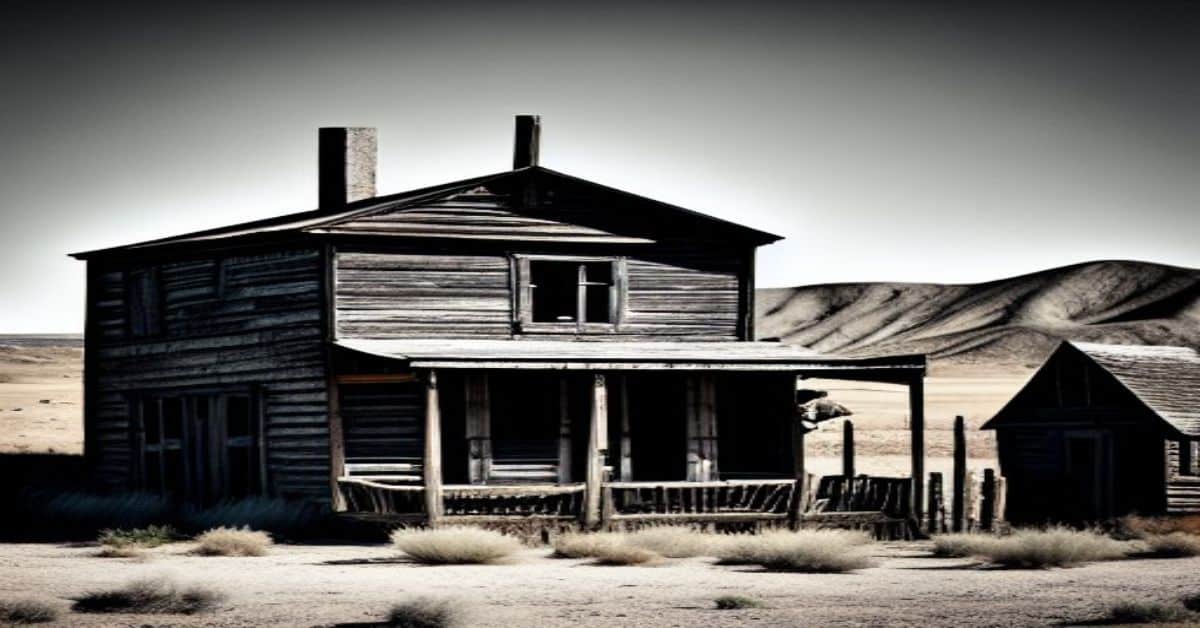Thistle, a small town located in Wasatch County, Utah, was once a thriving community with a robust agriculture and ranching industry. However, in April 1983, a catastrophic mudslide disaster struck the town, causing an earth dam to form, which blocked the river and resulted in severe flooding that led to the town’s ultimate demise. Today, Thistle remains a true ghost town, with only a few structures and buildings standing as a testament to its past.
The history of Thistle dates back to the late 1800s when the town was established as a stop on the Rio Grande Western Railroad. Over the years, the town grew into a bustling community with a thriving agriculture and ranching industry, with a population of around 400 people.
However, the town’s fate took a tragic turn in 1983, when a massive mudslide disaster struck, resulting in the formation of an earth dam, which blocked the river and caused severe flooding. Despite efforts to save the town, it was eventually deemed uninhabitable, and the remaining residents were forced to leave.
Today, Thistle is a true ghost town, with only a few buildings and structures remaining as a testament to its past.
Key Takeaways
- Thistle was a thriving community in the late 1800s with a robust agriculture and ranching industry.
- The town’s growth and economic impact were significantly contributed by the arrival of the railroad in 1890, which opened up new markets for products from Thistle and surrounding towns.
- A mudslide disaster caused severe flooding in April 1983, leading to the demise of Thistle and its designation as a true ghost town today.
- The remains of Thistle, including dilapidated structures like a schoolhouse, a church, and a few abandoned homes, offer a unique opportunity for photography enthusiasts to capture the essence of a true ghost town and serve as a reminder of the power of nature and the fragility of human settlements in the face of natural disasters.
History of Thistle
Thistle’s history dates back to 1883 when farming and ranching were established in the area. The town was situated in a fertile valley where farmers grew crops such as wheat, oats, and barley.
The railroad’s arrival in 1890 contributed significantly to the town’s growth, allowing for easier transportation of goods and people. With the railroad, Thistle became a hub for commerce and trade, boosting the local economy and creating jobs. The railroad’s economic impact was felt throughout the region as it opened up new markets for products from Thistle and surrounding towns.
The town’s population grew as more people moved to the area seeking employment and better opportunities. However, Thistle’s prosperity was short-lived as disaster struck in April 1983. A massive mudslide blocked the river, creating an earth dam that caused water to back up, eventually flooding Thistle and ending the town’s existence as a thriving community.
The Mudslide Disaster
The force of nature’s wrath was unleashed in April 1983 when a massive mudslide blocked a river, creating an earth dam and causing catastrophic flooding that covered an entire community. The mudslide disaster significantly impacted the community of Thistle, with many residents losing their homes and businesses overnight.
Here are some key points to highlight the impact of the mudslide disaster on the community of Thistle:
- The mudslide occurred due to a combination of heavy rainfall and the unstable geology of the area.
- The flooding caused by the mudslide covered an area of approximately 65,000 acre-feet and reached a depth of 165 feet.
- The residents of Thistle were forced to flee their homes, with many losing everything they owned.
- The impact of the mudslide disaster was felt beyond Thistle, with many surrounding towns also affected by the flooding.
- Despite the devastation, there were also stories of survival, with many residents banding together to help each other in the aftermath of the disaster.
Remains and Photos
Few old buildings and photographs serve as the only remains of this once-thriving community that met its end due to the catastrophic mudslide disaster. The remains of Thistle include dilapidated structures such as a schoolhouse, a church, and a few abandoned homes. These buildings, while worn down by time and the elements, offer a glimpse into the past and the lives of those who once called Thistle home.
For photography enthusiasts, Thistle provides a unique opportunity to capture the essence of a true ghost town. The remnants of the town offer a haunting and eerie atmosphere that can be captured through the lens of a camera. Photographers can explore the abandoned buildings and capture the beauty in the decay.
“From Salt Lake, travel on I-15 towards the town of Spanish Fork. Take exit 261 and head east on U.S. Route 6/89. To view the landslide from the downstream side, turn right onto Spanish Fork River Park road after approximately 11 miles; otherwise, continue approximately 12.7 miles (from I-15) and turn right into the large pullout immediately before a massive double road cut. This pullout provides an excellent overview of the area. Approximately 1.5 miles past the pullout, turn right onto U.S. Route 89 and travel approximately 1.5 miles to the ruins of the town of Thistle.”
https://www.atlasobscura.com/places/thistle-ghost-town
The remains of Thistle stand as a reminder of the power of nature and the fragility of human settlements in the face of natural disasters.
Frequently Asked Questions
What was the population of Thistle before the mudslide disaster?
The population size and demographics of Thistle before the mudslide disaster are not provided in the given information. Therefore, it is impossible to provide an answer to the current question.
Are there any legends or ghost stories associated with the town?
No ghost stories or legends are associated with Thistle’s few remaining old buildings, but visitors have reported ghostly encounters. Some claim to have seen apparitions or felt eerie presences in the haunted buildings.
What was the economic mainstay of the town before the railroad was built?
Before the railroad was built, Thistle’s economy relied on the mining industry and agriculture. The area was known for farming and ranching, and mining was prevalent in the surrounding mountains.
Has there been any attempt to remove the earth dam and restore the river to its original course?
Restoration efforts to remove the earth dam and restore the river to its original course have not been successful due to the significant environmental impact it would cause.
Are there any access restrictions or safety concerns for visitors exploring the remains of Thistle?
Visitors exploring Thistle’s remains should exercise caution due to the unstable nature of some structures and the potential for hazardous materials. The environmental impact of the mudslide and resulting flood is still evident.


